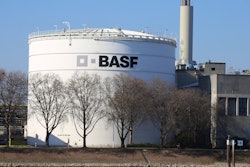The Curved Glass Revolution
Like many innovations, curved glass for smartphones has had its share of false starts, retreats, and reintroductions. From the introduction of flat glass with contoured edges to curving of the glass out of the plane of the glass surface, the industry has moved from placing curved glass over flat screens to using curved glass over curved LCD and OLED displays in a short period of time. New software will continue to take advantage of and fuel development of the new displays with both three-dimensional images and increasing use of the edges of the screen to display information.
Initially, curved glass and the capabilities it allows will be a critical differentiator for leading manufacturers in the field. We can then expect curved glass to move into the mainstream and become an essential feature for all serious competitors. As this happens, it’s important to note that the molds used to shape curved glass are just as important as the specialized glass itself in ensuring the powerful potential of this technology is fully realized.
Graphite is the material of choice for forming curved glass molds, and the quality of that material can have a huge impact on the quality of glass it forms, the longevity of the molds, and the economics and yield of the process itself. While the process of creating curved glass is theoretically simple, the key challenge for manufacturers will be to keep up with the demand.
Critical Glass and Mold Issues
In production, a flat glass blank is heated until it becomes malleable and, with a combination of heat and pressure, formed to the desired shape in a mold. When forming glass, heat and pressure can affect both the finished glass product and the mold itself in several ways. The surface texture of the mold will determine the smoothness of the glass surface. If the mold surface is less than ideal or becomes rougher or more porous with use, that undesirable texture will be transferred to the glass.
Glass can, of course, be polished to improve its surface finish, but this extra step takes time and increases cost. Achieving and maintaining a smoother mold surface directly is a more cost-effective way to maximize yield and control production costs.
Because both glass and graphite expand when heated, any mismatch in the rate of thermal expansion can result in out-of-spec glass, reducing yield. Additionally, oxidation in impure graphite can cause the material to break down.
Over time, this can affect the mold surface, which adversely can affect the glass it produces. This can also shorten the useful life of the mold, resulting in production shutdown and increased mold and labor costs to replace and prepare new molds.
The hardness of the graphite selected for mold production also affects yield and costs. Softer grades of graphite are easier to machine, but will break down sooner and require replacement. Harder grades will be more challenging to produce but will last longer.
Cost of Ownership Considerations
Many factors contribute to the total cost of forming glass. These include:
- The cost of the glass itself, which is fixed.
- The cost of the graphite material used to create the mold.
- The cost of machining the graphite mold, which can vary depending on factors like the material hardness.
- The need for the extra step of polishing the glass surface after molding, which is typically determined by the mold material microstructure.
- Reduced yield due to glass distortion and poor fit to the finished product; typically caused by mismatch between the coefficients of thermal expansion (CTE) between the glass material and the mold material.
- Shortened mold life when using softer graphite material.
- Shortened mold life due to the breakdown of impure graphite leaving etching and pits in the mold surface; caused by mold material reacting with trace oxygen under high heat conditions.
Controlling the total cost of glass forming can be a complex challenge. Because mold material has so much impact on that cost, the challenge is best met by working with an experienced materials partner to determine which factors will impact the production process and selecting the best material to minimize that impact.
Graphite Considerations for Glass Forming
Graphite Microstructure
Because the mold surface is mapped directly onto the softened glass screen as it forms, the graphite surface structure is critical. Pits and voids in the mold will create “pimples and dimples” on the glass surface. Any graphite surface will leave some texture on the glass that will need to be smoothed by polishing, but finer graphite microstructure will significantly reduce the roughness of the resulting formed glass screen and reduce the need for polishing.
Figures 1 and 2 show the microstructure difference between conventional graphite and three-micron POCO graphite used for glass molding.
Coefficient of Thermal Expansion (CTE)
The most popular glass for smartphone applications has a high coefficient of thermal expansion. If the mold material does not closely match the glass CTE, the two will change shape differently as they cool, causing the cooling glass to pull away from the cooling mold, resulting in glass distortion (Figure 3). In some cases, bits of glass get trapped and attach to the mold surface creating distortion in subsequent screens made in that mold. In selecting a graphite material for glass molding, it is important to match the material’s CTE to that of the glass material being molded as closely as possible to prevent this distortion.
Maximum Purity and Oxidation Threshold
No matter how near-perfect the mold surface, it can degrade over time as contaminants in the material accelerate oxidation when the mold is heated. This oxidation can weaken and coarsen the mold surface reducing the quality of the glass formed and ultimately requiring mold retirement and replacement. Reduced metallic contaminant levels, as measured by ash analysis, result in a higher oxidation threshold that will improve the mold surface quality over time and lengthen its useful life (Figure 4). Longer life correlates directly with reduced cost of mold material and machining.
Durability vs. Machinability
While mold material physical strength and hardness help extend mold life, harder material can increase the difficulty of machining the mold. There is no single ideal balance of these two considerations. Ideally, a material supplier will offer a range of graphite material grades along with detailed documentation and expertise to help a manufacturer choose the best material for their application.
What’s Next?
The smartphone industry is rapidly accepting curved screen glass as a standard component. Curved glass screens are formed in graphite molds, and the graphite material choice can impact several factors in the cost of production and negatively affect time to market. The ideal graphite material will have a finer microstructure and closely match the CTE of the glass. It will balance material hardness to allow effective machining while extending mold life. The result will be higher yield, better glass quality with less secondary processing, and less need to replace costly molds.
About the Author
Rick Slimp is the Worldwide EDM and Glass Forming Director at Entegris.























